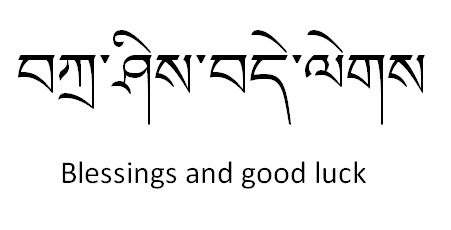Tibetan is the official language of the Tibetan Autonomous Region and the most widely spoken language in the region; it is also spoken in Nepal and India. There are approximately 25 different dialects of the Tibetan language some of which appear in the neighboring provinces of Sichuan, Qinghai and Yunnan. In total approximately 6 million people speak some form of Tibetan language in China, Nepal and India and 150,000 people that speak the language as a part of the Tibetan Diaspora. Large Tibetan communities can be found in Switzerland, Norway, the United States, and Taiwan.
Even Tibetans have a difficult time distinguishing between the different spoken dialects of their people; however, the language in written form provides an anchor of universal understanding because it does not vary from region to region. Tibetan is a monosyllabic language and lacks inflection, which creates a strong emphasis on word order. The language has six tones: short high, long high, short low, long low, high falling, and low falling.

The language is written from left to right, syllables are separated by a dot, and each syllable has an inherent vowel. It has 25 consonants, 6 affricates and 5 vowels. An affricate is a complex speech sound consisting of a stop consonant and a fricative; fricatives have a similar sound to that of the ch in church and j in the sound of joy.
There are three main dialects of the Tibetan language: Amdo, Kham and U-tsang. The Amdo dialect has roughly 1.5 million speakers. Two versions of the Amdo dialect exist known as Nomadic and Agricultural. This dialect is known for its uniformity and has little variation across its users; other Tibetan dialects are known to have variations and even within a dialect, some Tibetans may not understand one another.
The Kham dialect is the Tibetan dialect of the eastern region of Tibet and has five sub-dialects within the region. The people of this region are known as Khampas. The U-tsang dialect is considered the standard form of the Tibetan language and spoken in the capital city of Lhasa.
The University of Virginia offers Tibetan language study courses and Tsetan Chonjore serves as the Director of Language Studies. The program includes extensive reading of Tibetan literature, and studying of the traditional language. An 8 week summer intensive program is offered by the university.
Dhungker Language School is a prime choice in Tibet for people wanting to learn the Tibetan language in an immersion style program in Lhasa. The program includes handwriting exercises, text recital and essay composition.


at 2:10 am
why dose 10 yuan note looks different